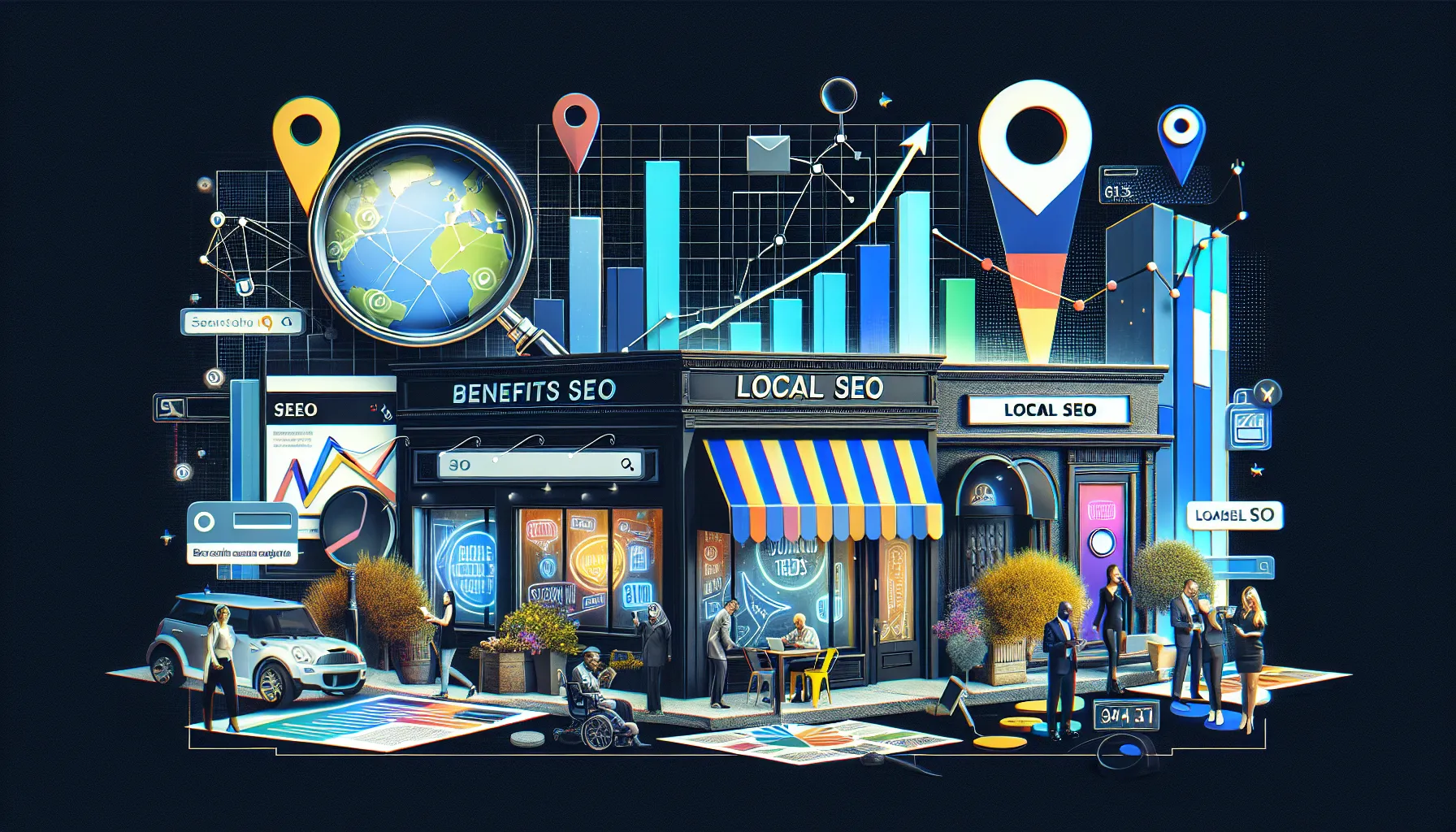
In today's digital landscape, the detrimental impact of outdated web designs on businesses cannot be overstated. From decreased brand image and conversion rates to compromised security and hindered performance, the consequences are far-reaching.
Neglecting to update your website design can result in diminished trust, higher bounce rates, and reduced user engagement.
To stay ahead of the competition and maximise online presence, it is imperative that businesses prioritise modern and engaging web design.
In this article, we will explore the detrimental effects of old web design and the importance of staying up-to-date in a rapidly evolving digital world.
Decreased Brand Image and Professionalism
One of the consequences of having an outdated web design is a decrease in brand image and professionalism, as visitors may perceive the website as unreliable and not up-to-date. An outdated design can have a significant negative impact on user experience, leading to a decline in customer perception.
When visitors encounter an outdated website, they may question the credibility and trustworthiness of the brand. In today's digital age, where consumers have high expectations for modern and engaging online experiences, an outdated design can make a company appear out of touch and behind the times. This can result in potential customers seeking out competitors with more updated and visually appealing websites.
It is crucial for businesses to prioritise maintaining a modern and user-friendly web design to convey professionalism and build a positive brand image.
Lower Conversion Rates and Visitor Perception
The decrease in conversion rates and visitor perception can be quantified by analysing the number of abandoned carts and the decrease in click-through rates. Outdated web design negatively impacts customer satisfaction and website credibility.
When visitors encounter an outdated design, they may question the reliability and trustworthiness of the website, leading to lower conversion rates. The lack of modern design elements and functionality can also result in a poor user experience, causing visitors to abandon their carts and navigate away from the site.
This not only impacts customer satisfaction but also diminishes the credibility of the website. To ensure a positive impact on customer satisfaction and website credibility, it is crucial to invest in a modern and engaging web design that meets the expectations of today's users.
Decreased Trustworthiness and Appeal Compared to Competitors
Outdated web design hampers trust and diminishes appeal when compared to competitors with more modern and visually engaging websites. This can lead to negative perception of the brand and put businesses at a competitive disadvantage.
Here are four reasons why outdated web design can be detrimental:
- Unprofessional appearance: Outdated designs can make a website look unprofessional, which can be off-putting to visitors and potential customers.
- Lack of trustworthiness: Visitors may perceive an outdated website as unreliable or not up-to-date, leading to a decrease in trust and credibility.
- Lower engagement: Difficult navigation on an outdated design can result in higher bounce rates and lower engagement, as users struggle to find the information they need.
- Competitive disadvantage: Compared to competitors with modern and visually appealing websites, businesses with outdated designs may appear less trustworthy and appealing, putting them at a disadvantage in the market.
To avoid these pitfalls, it is essential to invest in a modern and engaging web design that builds trust, improves user experience, and provides a competitive edge.
Difficult Navigation and Higher Bounce Rates
Difficult navigation on a website design can lead to higher bounce rates and a decrease in user engagement. When users struggle to find what they are looking for, they are more likely to leave the website and explore other options. This not only affects the user experience but also has an impact on SEO. Search engines consider bounce rates as a signal of poor user experience, which can result in lower search rankings.
Improving the user experience by ensuring easy navigation and clear information structure can help reduce bounce rates and increase user engagement. A well-designed website with intuitive navigation allows users to find what they need quickly and easily, resulting in a positive user experience. This, in turn, can lead to longer visits, repeat visits, and increased conversions.
Furthermore, a website with improved user experience is more likely to receive positive feedback, social shares, and recommendations, which can contribute to improved search engine rankings. Search engines prioritise websites that provide value to users, and a positive user experience is a crucial factor in determining value.
Importance of Modern and Engaging Design
One key factor in maintaining a competitive edge is by incorporating modern and engaging design elements into your website. Here are four reasons why modern and engaging design is important for your business:
- Improved User Experience: A well-designed website with intuitive navigation and responsive layouts ensures a smooth and enjoyable experience for visitors. This leads to increased engagement, longer time spent on the site, and higher conversion rates.
- SEO Optimisation: Modern designs are more SEO-friendly, with clean code, fast loading times, and mobile responsiveness. These factors contribute to higher search engine rankings and increased visibility in search results, driving organic traffic to your website.
- Enhanced Brand Image: A visually appealing and modern website design builds trust and credibility with your audience. It showcases your commitment to quality and professionalism, making your brand more attractive to potential customers.
- Competitive Advantage: In today's digital landscape, a modern and engaging website sets you apart from your competitors. It differentiates your brand, captures attention, and keeps visitors coming back for more.
Building Trust and Increasing Engagement
The implementation of effective strategies for building trust and increasing engagement is crucial for businesses to thrive in today's competitive digital landscape.
One key strategy is providing a personalised user experience. By tailoring content, recommendations, and offers to individual preferences and behaviors, businesses can create a more engaging and relevant experience for their customers. This not only increases the likelihood of conversion but also enhances credibility.
When customers feel understood and valued, they are more likely to trust and engage with a brand. Additionally, businesses can increase credibility by incorporating social proof, such as customer testimonials and reviews, into their digital platforms. By showcasing positive experiences from real customers, businesses can establish trust and encourage others to engage with their products or services.
Overall, prioritising personalisation and credibility is vital for businesses to succeed in the digital landscape.
Clear Navigation and Competitive Advantage
Effective navigation plays a pivotal role in enhancing user experience and giving businesses a competitive advantage in the digital landscape. When it comes to website design, clear navigation is essential for guiding visitors and ensuring they can easily find the information they need.
Here are four reasons why clear navigation provides improved user experience and search engine optimisation:
- Improved User Experience: Clear navigation makes it effortless for users to navigate through a website, find relevant content, and complete desired actions. It reduces frustration, encourages exploration, and keeps visitors engaged.
- Enhanced Search Engine Optimisation: Clear navigation aids search engine crawlers in understanding the website structure and content hierarchy. This improves the website's visibility in search engine results pages, driving organic traffic and boosting rankings.
- Reduced Bounce Rates: When users can quickly locate what they are looking for, they are more likely to stay on a website longer. Clear navigation decreases bounce rates, increasing the chances of conversions and customer retention.
- Competitive Advantage: Websites with intuitive and user-friendly navigation stand out among competitors. It creates a positive impression, builds trust, and encourages repeat visits, giving businesses a competitive edge.
Get in touch with us today to discuss how we can revamp your website and drive new sales growth.
Our dedicated experts are ready & waiting to get started today.

Subscribe to Q Insights



